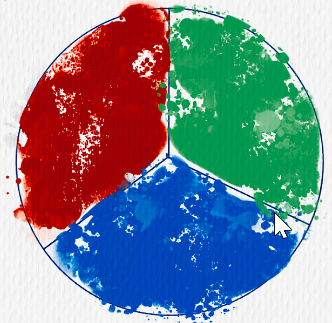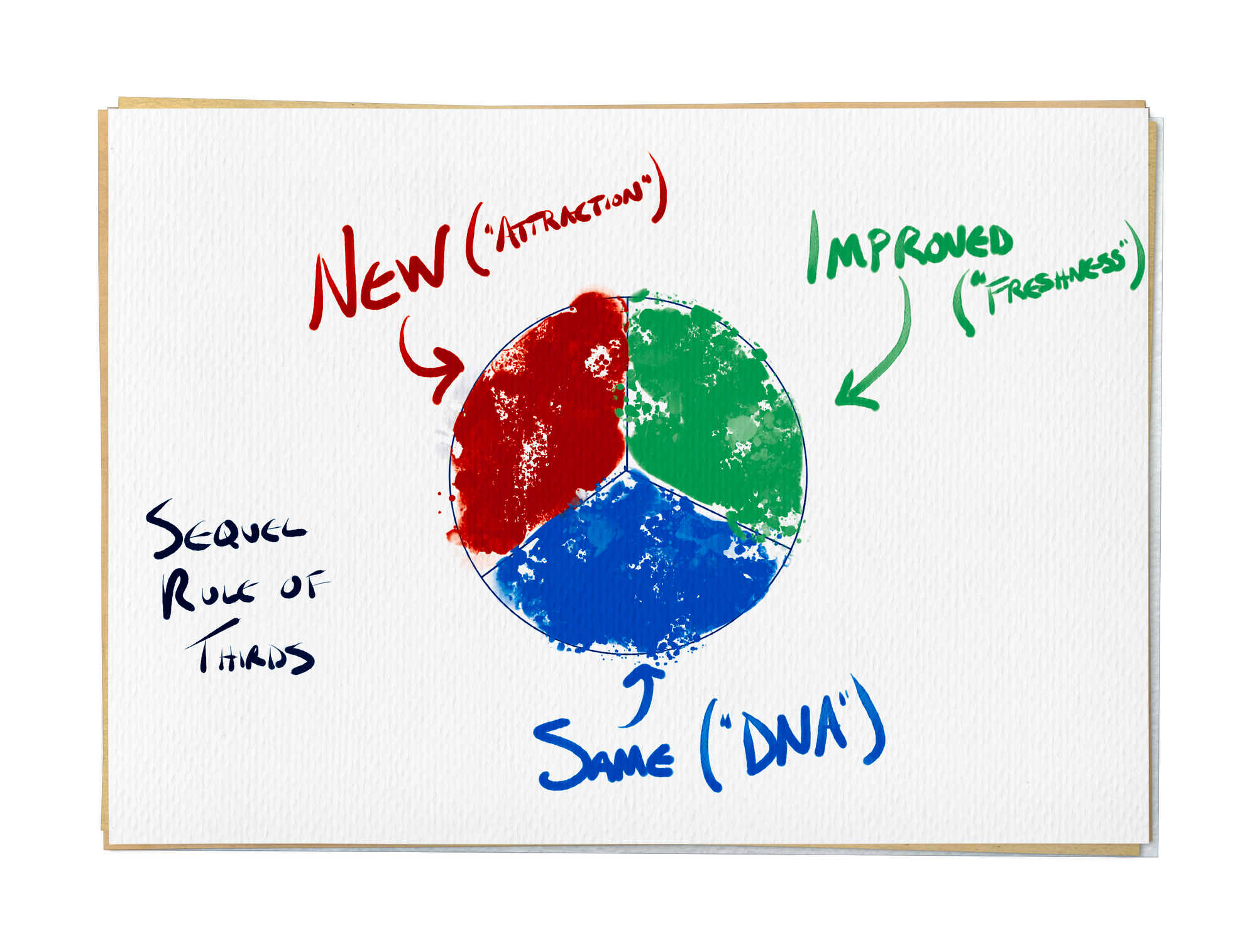The Sequel Rule of Thirds
Knowing how much to change, improve or keep the same when making a game sequel.

When making a follow-up to a game, how much should you change? What to change? Is all new content best? Where to even begin?
The best sequels seem give us more of the game we love, but still bring something new and fresh. Changing too little leaves players with no reason buy or play it. But if too much has changed, it loses its DNA.
So on this eve, as we release our Subnautica-DLC-turned-sequel, Below Zero, it seemed appropriate to briefly discuss a rule of thumb when answering these questions. I've heard other developers talk about this, but I've never seen it written up anywhere.
I'll call it the Sequel Rule of Thirds. It describes the rough proportion of what to change and how. It covers everything technical, designed and artistic in a game:

1/3 New - "Attraction"
This is exciting new stuff that get the attention of your players. It's why they want to buy or play it. Without it, you could release a sequel that no one notices or cares about.
In Below Zero, this is a new story told in a new way, our new arctic region (on the same planet), weather, new creatures, new biomes, first-person narrative, a new player character, cutscenes, etc.
1/3 Improved - "Freshness"
This represents fixes, improvements and addressing the original's deficiencies. Quality of life improvements, better usability, polished and remixed audio, performance, streamlined menus, removing broken stuff, etc. Without this, the game might feel a bit stale.
In Below Zero, this is better frame-rates, reduced pop-in, faster load times, more beautiful level design, fewer bugs, better sound effects, recipe pinning, a longer, community-infused soundtrack, etc.
1/3 Same - "DNA"
This is what you don't touch, to preserve the game's identity. It provides the base from which the New and Improved recolors your original game. Without it, players may feel like told them you were making a sequel, but made a new game instead.
In Below Zero, we kept the same crafting and survival mechanics (with the addition of cold), swimming, many tools, base-building, core creatures like the Bladderfish and Arctic Peepers (technically changed but more same than new or improved), the Seaglide, etc. You could glance at a Below Zero stream and you might think it was Subnautica.
Conclusion
It's hard to know how well we succeeded with Below Zero. This is more of a guideline than a rule of course, but right now I think this served us well.
Looking back, I wonder if made some missteps with Natural Selection 2. I noticed players disapproving of the reduction in asymmetry: NS1 had the Gorge player making all strategic choices while NS2 unified the aliens and marines by removing the Gorge's strategic choices and adding the top-down RTS interface from the marines.
To me, this was in the Improved bucket, as it fixed a lot of the resource economy balancing problems with different player counts. But I think players may have viewed this something that should've stayed in the Same category. We may have been able to address this with better communication to our players so they saw understood our reasoning. We'll never know.
Games are both art and science, so this is guideline is no guarantee. But I hope it helps get your sequel headed in the right direction.
Thoughts or questions? Join the discussion on Discord or get in touch.